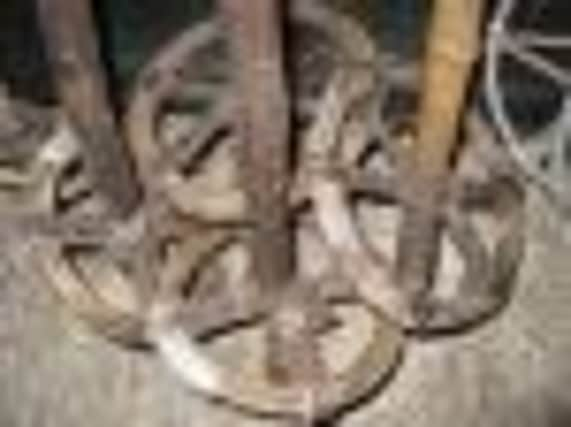Roger Cox: It’s time for the artefacts and achievements of Scottish mountaineering to be celebrated in a museum


Since its whitewashed walls were covered in graffiti following revelations about his abusive past there have been calls for it to be torn down, but there are also those who believe it should be spared the bulldozer treatment. Only the other week, the mountaineer and journalist Cameron McNeish was on BBC Radio Scotland’s Call Kaye show, patiently explaining to apoplectic callers that, long before it was owned by Savile, the house at Allt-na-reigh had been the home of Hamish MacInnes – arguably Scotland’s greatest living mountaineer and an innovator who developed several key bits of kit that climbers still rely on today. To tear it down, McNeish argued, would be to demolish a place of major significance to the history of mountaineering.
There have been various suggestions as to what the house might be used for in the future – at time of writing a bothy seems the most likely – but one proposal that really piqued my interest was that it should be turned into a Scottish mountaineering museum. For all kinds of logistical reasons, Allt-na-reigh would not make a good site for such a museum, but looking beyond the debate about the future of Savile’s former pad, shouldn’t such a museum exist somewhere? Absolutely. In fact, it almost beggars belief that such a thing hasn’t been created already.
Advertisement
Hide AdDuncan Macmillan, The Scotsman’s chief art critic, has long campaigned for Scotland’s National Galleries to give greater prominence to Scottish art, often making the point that if we don’t tell our own story then nobody else is going to do it for us. The same could be said of Scottish mountaineering and – as with Scottish art – it is a story very much worth telling, including as it does the pioneering exploits of the fledgling Scottish Mountaineering Club in the two-and-a-half decades before the First World War (notably Hugh Munro’s cataloguing of all the summits over 3,000ft); the game-changing string of first ascents completed on Ben Nevis by Robin Smith and Jimmy Marshall in 1960; MacInnes’s notable contributions to ice axe and rescue stretcher design, not to mention his trailblazing ascents; and the world- beating climbs tackled in recent years by the supernaturally talented Glaswegian Dave MacLeod. In any other country in the developed world with such a rich climbing heritage there would be museums in every other mountain town, but here? Nothing. As things stand, a tourist from Kentucky could visit Ben Nevis, Glencoe and the Cairngorms, passing through Fort William and Aviemore on the way, and return home without the slightest inkling of the century-and-a-half of high-stakes drama that has been played out amongst these picturesque peaks and crags.
And the case for a mountaineering museum becomes even stronger when you consider that all the necessary raw materials already exist. The Scottish Mountaineering Council has an extensive archive of books and photographs, and then there’s Mike Tighe’s Scottish Mountain Heritage Collection, currently housed in a barn next to his house in Glen Roy, near Fort William, a treasure trove of artefacts and memorabilia. Highlights include one of MacInnes’s revolutionary all-metal ice axes, Tom Weir’s Mamiyaflex camera and an antique altimeter that belonged to the so-called “father of Scottish mountaineering”, Harold Raeburn. In 2009, Tighe managed to get money from the National Lottery Heritage Fund to catalogue his collection and put it all online (see www.smhc.co.uk), but as yet there are no concrete plans to find it a permanent home where it would be available to the public. “The ultimate dream is to have a museum of some sort,” he says. “There seems very little point in having this collection if people don’t get to see it.”
Given the importance of tourism – and, increasingly adventure tourism – to the Highland economy, and the fact that all that’s really needed here is a building (which could be a pre-existing one) and a small number of staff, surely this is something worth investing a modest amount of public money in.
Tighe thinks Fort William would be the obvious home for any such museum, given its proximity to Ben Nevis, and Dave MacLeod agrees, adding: “When it’s wet weather in Fort William, which is most of the year, there’s not a lot of indoor things for visitors to do.”
Would a climbing museum be too niche? Perhaps, but what if its remit were broadened slightly to include other mountain sports – skiing and mountain biking, say? Would climbers mind? Tighe doesn’t think so. Not only that, he just so happens to have a large collection of vintage ski gear in his barn, donated by the Scottish Ski Club when they couldn’t find a suitable home for it.
With a bit of political will and a following breeze, this museum could be up and running by next Tuesday. Like a novice climber, standing apprehensively at the bottom of his or her first pitch, all it needs is a gentle shove in the right direction.